|
Click pictures for a larger version.

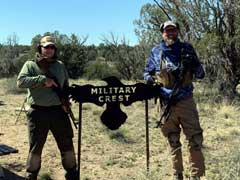
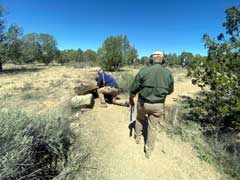
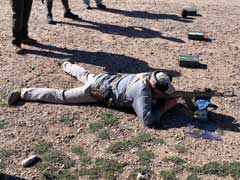
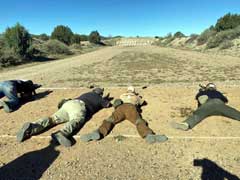
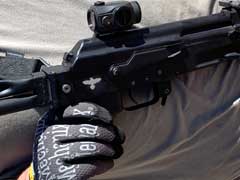

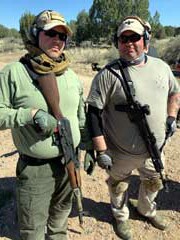
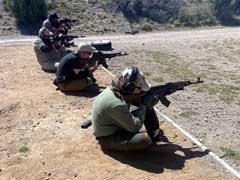
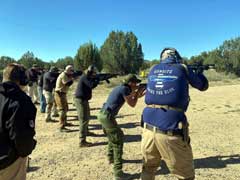
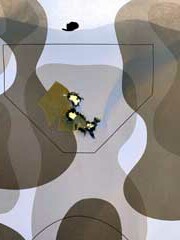
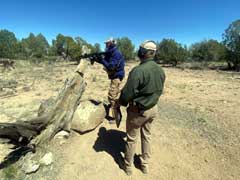

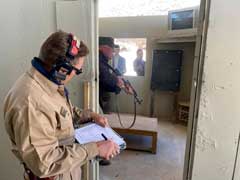

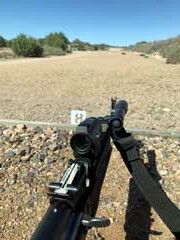
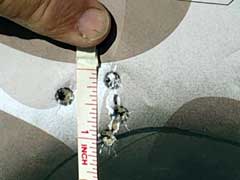
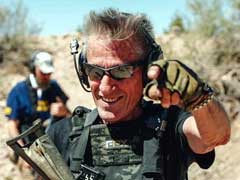
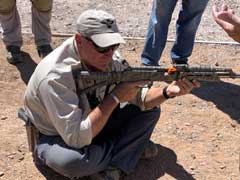
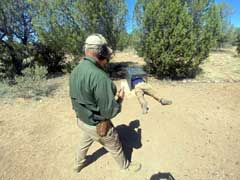

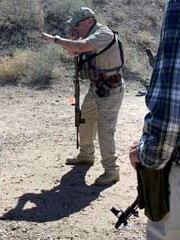
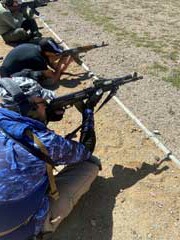
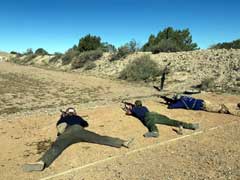
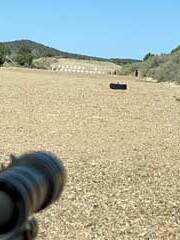
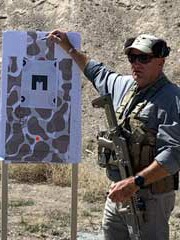
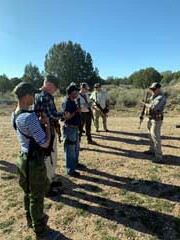
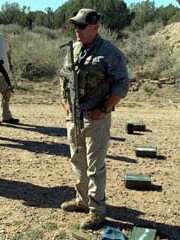
|
|
The AK-47 platform is
legendary as a light infantry weapon.
Invented, in 1947, by Mikhail Kalashnikov as a military
weapon for the Soviet Union infantry, it wasn’t fully adopted
until 1949, when some of the early design bugs were worked out.
And, boy, were they worked out!
It has worldwide reputation for being reliable.
Designed to work in frozen conditions, it works in all
types of climates, and, like the old Timex commercials, it can
“take a lickin’ and keep on tickin’”.
Adopted by many nations, officially or unofficially, in
Eastern Europe, Africa, the Middle East, and many parts around
the world, many millions have been made and are still in service
globally. It has
been very present, on both sides, in the current conflict from
the Russian invasion of Ukraine.
While the rifle has gone through quite a few evolutions,
from the early Type 1, 2 and 3, to the AK-74, the AKM, and now
with the AK-104 and AK-105 more modern variations, it’s basic
design and function hasn’t really changed since the late
1940s. This is a
testament to Kalashnikov’s genius and simplistic,
but very robust, design.
I have known about the AK
for many years, and have fired/operated, a few of them, but it
has never really been something that had my interest and, though
very respectful of the platform and its extreme reliability,
growing up in the 70s and 80s, it was always the “enemy’s
gun” and just never received much of my attention.
When I received an email from Gunsite Academy that they
had just scheduled their first, inaugural, AK Armorer/Operator
class, in April of 2022, my interest was piqued.
Reading the email and realizing that Jim Fuller, head
honcho at Fuller Phoenix and founder/former owner of Rifle
Dynamics, would be there for the week, and would teach a one-day
armorer class as part of it, had my attention!
I signed up, paid my
tuition fees, and started scrounging up ammo as the class
syllabus indicated a predicted round count of around 1200
rounds. I
already had an AK in my collection that I decided I would use.
It is a Serbian-made, Yugo pattern, Zastava ZPAP M70,
chambered in 7.62x39. I
had already replaced the pistol grip with a Tango Down version
and had already replaced the gas tube with an Ultimak version,
with the Picatinny rail on top, and installed a Holosun 503C red
dot sight, in a forward (AKA “Scout”) position on the rail.
Upon further perusing the syllabus, I realized that a
night shoot would be on the schedule, so I acquired a Surefire
Scout light and mounted it as far forward on the rail as I
could. A
Vickers sling and Ten-Speed magazine pouch, both from Blue Force
Gear, were purchased and I was ready to go!
Upon arrival in Paulden and
getting settled in at one of the local rental cabins, I checked
and double checked my gear, loaded my magazines, and checked set
up in anticipation for the week’s work.
Check-in, registration, lunch order for the week (one of
the most important part of registration!) were quickly taken
care of on Monday morning and class began with a full day of Jim
Fuller leading us through the basics of the AK-47.
A brief history session on the design, the variations and
differences, the benefits and weaknesses of the platform were
discussed before we started tearing our guns apart through
disassembly, reassembly, lubrication, cleaning, and tuning.
Yes, we did learn a few tricks of the trade on how to
smooth the guns up. What a different it made on the cycling operation of my
rifle. Jim also
showed us how to install an aftermarket trigger, in this case a
Geissele/ALG AKT trigger, which significantly improved the feel
and reset of the trigger. We
discussed a few other general improvements, like the Ultimak gas
tube replacement for ease of optic mounting, as well as improved
furniture. After
another iteration of disassembly and reassembly, we ended the
day with rifles that were ready to go for the next 4 days of
planned hard use in the North Central Arizona dust and sand.
Day 2 of the class, our
first day out on the range firing our guns consisted of how to
properly load/unload, chamber check methods, tactical reloads,
prone positions, zeroing our rifles (25, 50, 100, 200 and 300
yards), trigger control, ready positions, how to account for
offset (both mechanical and optical), and then we started
shooting head shots, body shots, hammer pairs, controlled pairs,
failure drills (AKA Mozambique Drill), and stoppage/malfunction
clearance. One of
the myths that was quickly dispelled on this day was that AKs
are not accurate rifles. One
of our students, my buddy Jeremy, shot a sub-MOA 4-shot group
from 100 yards with his iron sighted Century Arms VSKA.
On the topic of stoppage clearances, you left handers out
there be careful of where you leave your right-hand thumb when
clearing them. Trust
me on that one (you can ask me privately how I got the #AKthumb
tag!).
Day 3 consisted of zero
confirmation, ready positions, down optic drills, occluded eye
drills, non-standard response (NSR), various
sitting/kneeling/squatting positions and asymmetric positions.
This was probably the toughest and hardest day for me.
I think my I-Phone told me that I walked around 4.5 miles
that day and when you combine that with the up and down
positional movement all day, I sure was sore the next day!!
Day 4 was more movement
with rapid assumption of different positions, turns and pivots,
multiple targets, and the introduction of the El Presidente
drill, which combines most of those topics into one drill.
For the AK (and carbine), it is done at 25 yards, facing
down range, and requires 2 shots on each of three targets,
followed by a speed magazine reload, and then another 2 shots on
each target, for a total of 4 shots on each target.
Par time is 12 seconds, which proved to be quite
sufficient for most students.
Each center of mass hit counts for 5 points, for a total
of 60 points. Any
second above the 12-second par time reduces your score by 5
points. Conversely,
any second below the 12-second par time adds 5 points to your
score. Our first few practice runs were done at 15 yards and allowed
me to gauge the benefit of speed vs accuracy.
While both are quite important, going too fast resulted
in missed shots and the 5 points per second gained, were very
quickly offset by the points lost on accuracy.
I figured out that, for me, keeping to around a 10-second
cadence offered me the sweet spot of speed and accuracy.
In fact, my 4 practice runs scored in 55,
61, 54 and 64. Quite
acceptable results, apparently.
We then proceeded to an outdoor simulator, the Military
Crest, where each shooter walks a trail about 20-30 feet from
the top of the crest of a hill, with man-size steel targets
scattered about the other side of the hill, anywhere from 150 to
300 yards away. There
are somewhere around 12-15 different stations/positions
requiring the use of various shooting positions to make the
hits. Having zeroed
our rifles out to 300 yards the day before, a good stable braced
position, good breathing, a good sight picture, and a proper
trigger press often resulted in one shot hits, proving one of
our instructors, Monte Gould,
right when he stated: “distance is to the advantage of the
superior shooter”.
We took a break around 4 PM
and the entire class met for dinner at the Little Thumb Butte
Bed and Breakfast, there in Paulden, AZ.
Our host, Anne, was extremely gracious and prepared a
wonderful meal for us. It
was good to relax, eat, and overlook the Butte along with the
headwaters of the Verde River…
It was nice while it lasted as we headed back to the
range for our night shoot.
The high desert is quite dark when the sun sets fully and
learning how our gear, both portable and fixed, worked in the
dark was quite educational.
Prior to our night shoot,
we had an impromptu visit from Alan Normandy, the head honcho at
BattleComp, makers of compensators and muzzle breaks for ARs and
AKs. He gave us a
quick run down on his newest and latest flash hider design,
aptly named the “Flash Hider” that is showing 99% flash
reduction in barrels over 14” and 70% reduction in muzzle
flash from barrels less than 14”, while providing improved
recoil management.
Remember that Surefire
light I bought and installed far forward on my rail?
Well, turns out it does a great job of brightly
illuminating the front sight post and pretty much blinding me
from seeing anything down range.
Combine that with the dust and sand kicked up after the
first shot fired from prone, and it was obvious to me that I
needed to figure out something better!
I am very glad I had the opportunity to figure that out
during a class and not during a most urgent and pressing need,
that’s for sure.
Day 5 was all about scored
school drills. We
all did the AK school drill with timed shots from 25 to 200
yards, performed the El Presidente drill, from 25 yards, on
which I managed to score a 61, took a stab at an indoor
house-clearing simulator called “The Pit”, and then tried
another outdoor simulator, The Scrambler, which consists of 7
different positions with targets from roughly 75-125 yards.
The Gunsite record time is around 35 seconds by a young
Force Recon Marine who completed it in his full gear and ruck
sack. Quite a feat!
I did it in 82 seconds, clean, and was huffing and
puffing for the last target, that’s for sure.
After what seemed like a very short hour lunch break, we
had the class shoot off where each student has an opportunity to
compete against other students, one-on-one, with a 100-yard
drill on three steel targets, each shot in a different position
(standing, kneeling, prone) with movement in between each shot.
Quite a heated competition took place with a 3-way tie
for the finals. One
of the students valiantly won the best of the 2 out 3 series and
took home a nice solid silver raven pin for his achievement!
The week ended with a
graduation ceremony, where each student was awarded a
certificate for their achievement, along with a certificate from
Crimson Trace for a free CT RAD Max Pro sight.
This Rapid Aiming Dot is an open reflex sight for
carbines,
or shotguns,
with a 3 MOA aiming dot. It
has an ambient light sensor that adjusts the brightness of the
dot automatically. It
also has a motion sensor that shuts off the dot after 2 minutes
without movement. Quite
a generous gift from Crimson Trace, a great industry partner for
Gunsite!
My Zastava ZPAP-70
performed flawlessly without any malfunctions using various
steel and aluminum cased Russian, Serbian, and Chinese surplus
ammunition. The
rifle was field stripped, cleaned and lubed every night after
class. I did have
Jim Fuller install one of his pistol grips, a Krebs safety and a
Geissele AKT trigger in my rifle at the end of the class, as I
had determined those to be worthy upgrades for future use.
The Holosun 503C performed very well.
I did find that the zero on it wondered about 3-4”
right at 100 yards after a mid-week battery replacement.
Nothing a few clicks of adjustment didn’t take care of
easily, but it was a bit of a surprise.
I purposefully exclusively only used 4 magazines during
the entire class: two from US Palm, one from Magpul, and one
from Tapco. All
three brands performed well without any problems or failures
whatsoever. All four magazines did need a good cleaning after the class
to get rocks, pebbles, sand, and dirt out of them from the
multiple drops on the ground during drills.
On the topic of cleaning, upon cleaning my rifle after my
return home, I did notice that my stock had worked itself a
little loose and had about an inch side-to-side wobble, which
was quickly fixed with an Allen wrench.
After 1200 or so rounds, that really is not much to write
about. I was very
pleased with how my set-up worked.
Overall, it was a great class.
I met new friends, reconnected with old ones, learned a
new platform, earned a challenge coin for my second-place
performance on the combined school drills, and came home sore,
tired, a bit sunburnt, but with an ear-to-ear smile, having
significantly improved my knowledge and familiarity with the AK
platform. Our instructors, Freddie Blish and Monte Gould, were great.
They were very familiar with the platform, one of them
having to use a battlefield pick-up while serving in Iraq, they
worked great together and complemented each other very well.
I learned quite a bit from each of them on both the AK
platform and general carbine tactics and am looking forward to
an advanced AK Class in the next few years!
Gunsite
Academy - Paulden, AZ: www.gunsite.com.
Matt
Olivier
  
Got something to say about this article?
Want to agree (or disagree) with it? Click the following link to
go to the GUNBlast Feedback Page.
|
|
Click pictures for a larger version.
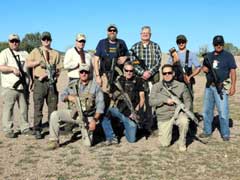

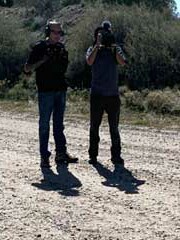


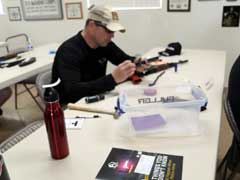
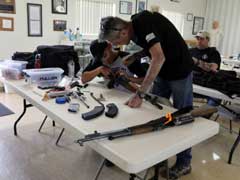
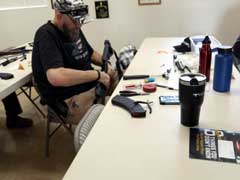
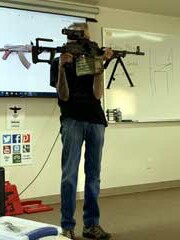
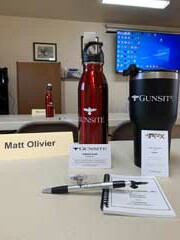
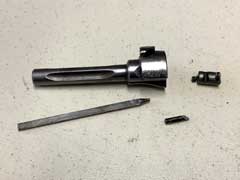
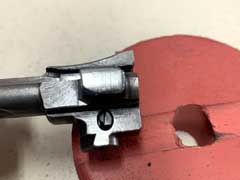

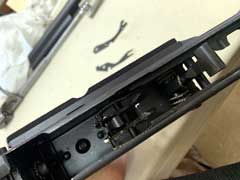
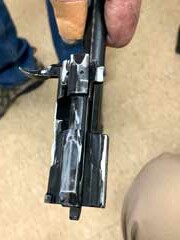












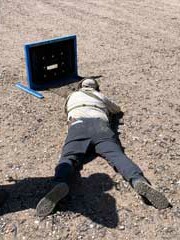
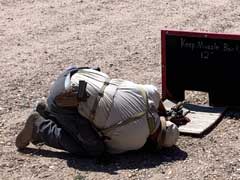
|
![]()